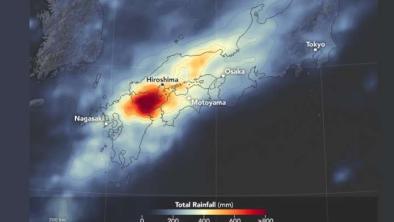Science Source
Report on Assessment of Impacts of Climate Change in Japan and Future Challenges
Summarizes what kind of impacts could be occurring due to climate change in Japan, as well as the magnitude and probability (significance) of impacts, timing of occurrence of impacts, timing required to initiate adaptation measures and critical decision-making (urgency), and the certainty of information (confidence)
- Observation results by the Japan Meteorological Agency of atmospheric CO2 concentrations show that atmospheric CO2 concentrations continue to increase, and in 2013 the monthly mean values exceeded 400 ppm at all three observation sites in Japan; in 2014, 400 ppm was also recorded on the ocean and aerial observations in the vicinity of Japan.
- The annual mean temperature in Japan fluctuates on different time scales ranging from years to decades, and it is virtually certain that it has increased from 1898 to 2013, at a rate of 1.14°C per 100 years (statistically significant at a confidence level of 99%).
- For annual precipitation, no long-term trend is evident for the period 1898–2013, but Japan experienced relatively large amounts of rainfall until the mid-1920s, and around the 1950s, and the annual figure has become more variable since the 1970s.
- It is extremely likely that the annual number of days with precipitation of ≥ 100 mm has increased from 1901 to 2013 (statistically significant at a confidence level of 95%). It is also extremely likely that the annual number of days with precipitation of ≥ 200 mm has increased over the same period (statistically significant at a confidence level of 95%). On the other hand, the annual number of days with precipitation of ≥ 1.0 mm has decreased (statistically significant at a confidence level of 99%); these results suggest decrease in the annual number of wet days including light precipitation and in contrast, an increase in extremely wet days.
- The annual maximum snow depth for the period 1962 to 2013 onward on the Sea of Japan side of eastern and western Japan is extremely likely to have decreased at rates of 12.3% per decade and 14.5% per decade, respectively (both statistically significant at a confidence level of 95%).
- The rate of increase of sea surface temperature (annual mean)around Japan over the last 100 years up to 2013 was +1.08°C/100 years, which is greater than for the North Pacific overall (+0.45°C/100 years).
Related Content
Headline

Jul 10, 2018 | IFLScience
Catastrophic Floods Are Destroying Japan, And Scientists Say It's Only Going To Get Worse
Headline

Jul 10, 2018 | The Guardian
Japan: death toll climbs to 155 after 'historic' rain and landslides
Headline

Jul 10, 2018 | CNN
At least 122 dead in Japan after flooding and landslides
Science Source
| Nature
Human contribution to more-intense precipitation extremes
Seung-Ki Min, Xuebin Zhang, Francis W. Zwiers et al


